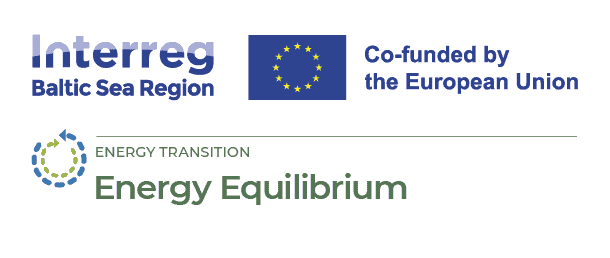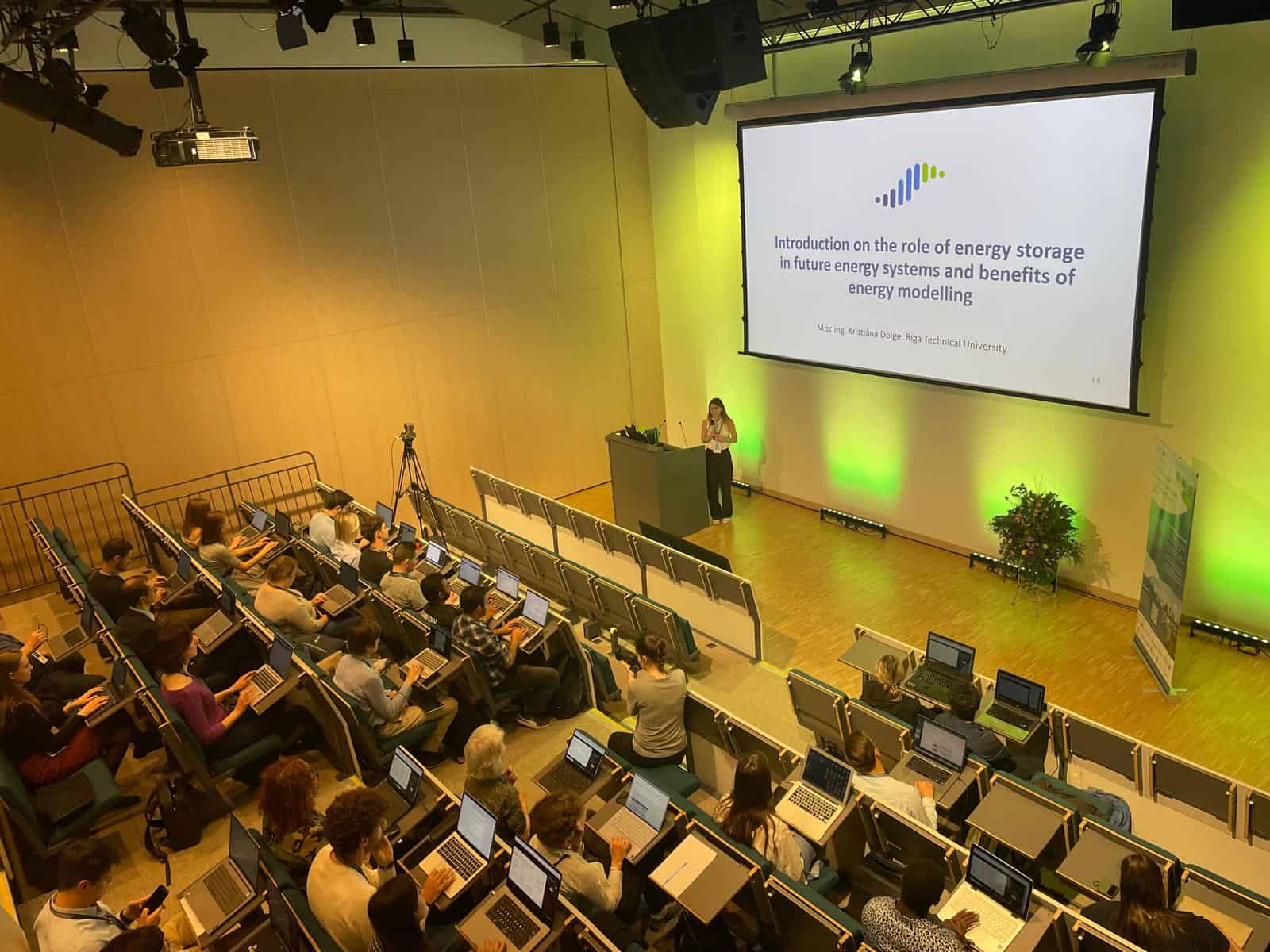
Innovative Energy Modelling Platform Empowers Municipalities Across BSR
07 June 2024
Energy Equilibrium Platform
The Energy Equilibrium Platform is an interactive and easy-to-use online tool that enables energy simulations for modelling local energy systems and their transition to a low-carbon energy infrastructure. The aim of the Energy Equilibrium Platform is to support municipalities and energy suppliers in decision-making related to the development of efficient action plans to accelerate local RES utilization in the region, including development of sufficient energy storage infrastructure.
Energy Equilibrium platform is accessible to everyone here.
The Energy Equilibrium Platform offers several functions, including modelling the energy sector for the development of long-term energy policies, identifying optimal renewable energy strategies, identifying the expansion of local renewable energy potential through storage solutions and simulating energy development scenarios for low-carbon systems.
The key target groups of the Energy Equilibrium platform are municipalities, local energy suppliers, regional public authorities, energy clusters and consulting companies, renewable energy and energy storage association, energy infrastructure technology companies, energy developers, and others.
The Energy Equilibrium Platform is intended for modelling energy policy in both energy production and main consumption sectors of the municipal energy system up to 2050. With the help of the model, it is possible to search for solutions to achieve the long-term local energy decarbonisation and efficiency targets and each of its users can find their own way to achieve the targets.
The platform can be used in day-to-day decision-making related to the development of energy infrastructure, the improvement of energy efficiency and the general optimisation of the sustainability of the energy system. It is intended that the results of the platform can significantly contribute to the development of feasible and reliable energy action plans in municipalities and regional authorities.
Users can search for solutions in all sectors together or individually by clicking on the corresponding sector menu. The platform offers modelling in different sectors such as apartment, single-family homes, public facilities, industry, services, agriculture, transport and others. To start the model, the user should press “Simulate” button. Then, by changing any parameter, user can see the effects on the final results in the graphs. If the user wants to return to the original version of the model, “Reset” button should be used. The initial version of the model corresponds to the baseline scenario of the municipality (after importing the specific municipality data). The results obtained are displayed and visualised in the diagrams representing the simulation results for the specific sector or technology and the entire energy system.
There are a total of 8 sections integrated in the Energy Equilibrium Platform:
- Introduction and tutorial section (Tutorial). This section provides the user with a general introduction to the Energy Equilibrium platform, its purpose and the features it offers. A tutorial video on how to use the platform is demonstrated in this section.
- Data import and calibration section (Data import). This section guides the user through four main steps in preparing the model for the specific case study and enables the import of specific municipal data. The user can upload the municipality’s historical data from an Excel file using the specially prepared project data template and save it in the model. After the data import, the data is calibrated to adjust the model for a better fit to the model. Once all these steps have been completed, the platform guides the user to continue modelling. For users who do not have prepared data, the platform can be used with all its possibilities, i.e. modelling can be started without data import. In this case, the data should be entered into the platform manually by the user.
- General inputs section (Inputs). In this section you can specify the socio-demographic, energy economic and sustainability parameters of the analysed system. It takes into account inputs such as population, electricity tariff, discount rate, fuel price, forecast of tariff and fuel price change, emission factors and other indicators.
- Energy demand section (Buildings). This section sets out indicators for energy demand and energy efficiency for different sectors. There are three separate sections in which different parameters are defined to enable insightful policy modelling. In the first section, the total area of buildings and the current proportion of renovated buildings are specified. It also specifies the specific energy consumption for electricity and heat in the buildings and the expected reduction in consumption after renovation. The second section specifies the parameters for energy efficiency investment parameters allowing to determine the financing distribution of the renovation work (self-financing, loan, building subsidies), the specific investment costs for energy efficiency, the interest rate and the loan terms. The third section focuses on indicators for the diffusion of energy efficiency, describing social and psychological factors that influence the pace of renovation.
- Energy production section (Production). In this section, the user can select the energy generation technologies in operation. The Platform allows you to select energy generation technologies that are currently in operation in your municipality or for which new installations are planned. The list includes electricity and heat generation technologies, CHP plants and hydrogen generation technologies. The section offers the possibility to specify various operating parameters of the technology ( full load hours for heat and electricity, power to heat ratio, technical lifetime) and cost parameters of the technology (initial fixed costs, initial fixed and variable operation and maintenance costs) as well as the expected change in the costs.
- Energy storage section (Storage). This section allows to select energy storage technologies that are currently in operation in municipality or for which new installations are planned. The list contains technologies for electricity storage (different types of batteries) and heat storage (Pit Thermal Energy Storage and water tanks) as well as chemical storage solutions. Technology operational parameters such as depth of discharge, annual cycles, round trip efficiency and technical lifetime can be set and adjusted in the platform, as well as specific cost parameters.
- Transport sector section (Transport). This section allows to specify the main information of existing vehicles operating in municipality. User select to analyze both private and public transport. There are different indicators that user should specify for model to calculate transport energy consumption such as average mileage is the distance that a vehicle travels annually, average vehicle occupancy, and other.
- User experience feedback from (Feedback). A feedback survey is integrated on the last page of the platform to collect feedback on the user experience evaluation. The feedback survey is regularly analysed in order to make the necessary adjustments and improvements to the platform.
Piloting the Energy Equilibrium Platform
Energy Equilibrium Platform pilot activities were differentiated by two main approaches – platform pilots for project partners and general pilot activities for stakeholders outside the partnership.
Project partner pilots were carried out in two rounds. The first round of pilots for the project partners included individual meetings with each partner municipality to discuss the characteristics of each municipality’s energy sector based on the energy data provided by the municipality. Platform pilots took place in the following municipalities:
- Gulbene municipality (Latvia)
- Tukums municipality (Latvia)
- Mikolajki Pomorskie municipality (Poland)
- Wejherowo municipality (Poland)
- Taurage municipality (Lithuania)
- Tomelilla municipality (Sweden)
After each individual meeting with the municipalities the model was improved and adjusted based on the responses provided by the municipalities during the first round of pilots. Moreover, municipalities were asked to provide additional data on their energy sector and municipal sociodemographics to be included in the model.
The second round of pilots included a webinar organized for all partner municipalities. Webinar on Energy Equilibrium second round of pilots took place on 24 May 2024. The webinar gathered 34 participants, including project partners, their stakeholders and internal working groups. During the webinar, the latest version of the Energy Equilibrium platform was explored, demonstrating its improved features and functionalities. Municipalities had the opportunity to delve into hands-on exercises, simulating various development scenarios tailored to the specifics of each municipality. The feedback received from the webinar participants is summarized in the project’s deliverable.
Energy Equilibrium platform general pilots were carried out in three main events and activities where participants engaged in the workshop which included hands on local energy system modelling using the Energy Equilibrium platform.
- Workshop using Energy Equilibrium platform as part of open study course “Environmental Engineering” which was held on 12 March 2024 and gathered around 100 participants from different fields of activities such as local public authorities, associations, companies from manufacturing and services sectors, and others.
- Interactive workshop “Energy Sustainability Compass: The Role of Energy Storage in Future Energy Systems” that was organized in the scope of the European Sustainable Energy Days on May 17, 2024. This workshop gathered around 67 participants where 43 of them participating onsite and 24 participants joining online.
- Webinar on the general piloting of the Energy Equilibrium platform, which took place on 31 May 2024. The webinar was attended by 19 participants who were introduced to the developed Energy Equilibrium platform.
Engage with us!
Get involved in project activities and benefit from the full use of the developed Energy Equilibrium platform within your municipality!
Interactive map showing pilot locations. Use the arrow keys to move the map view and the zoom controls to zoom in or out. Press the Tab key to navigate between markers. Press Enter or click a marker to view pilot project details.







